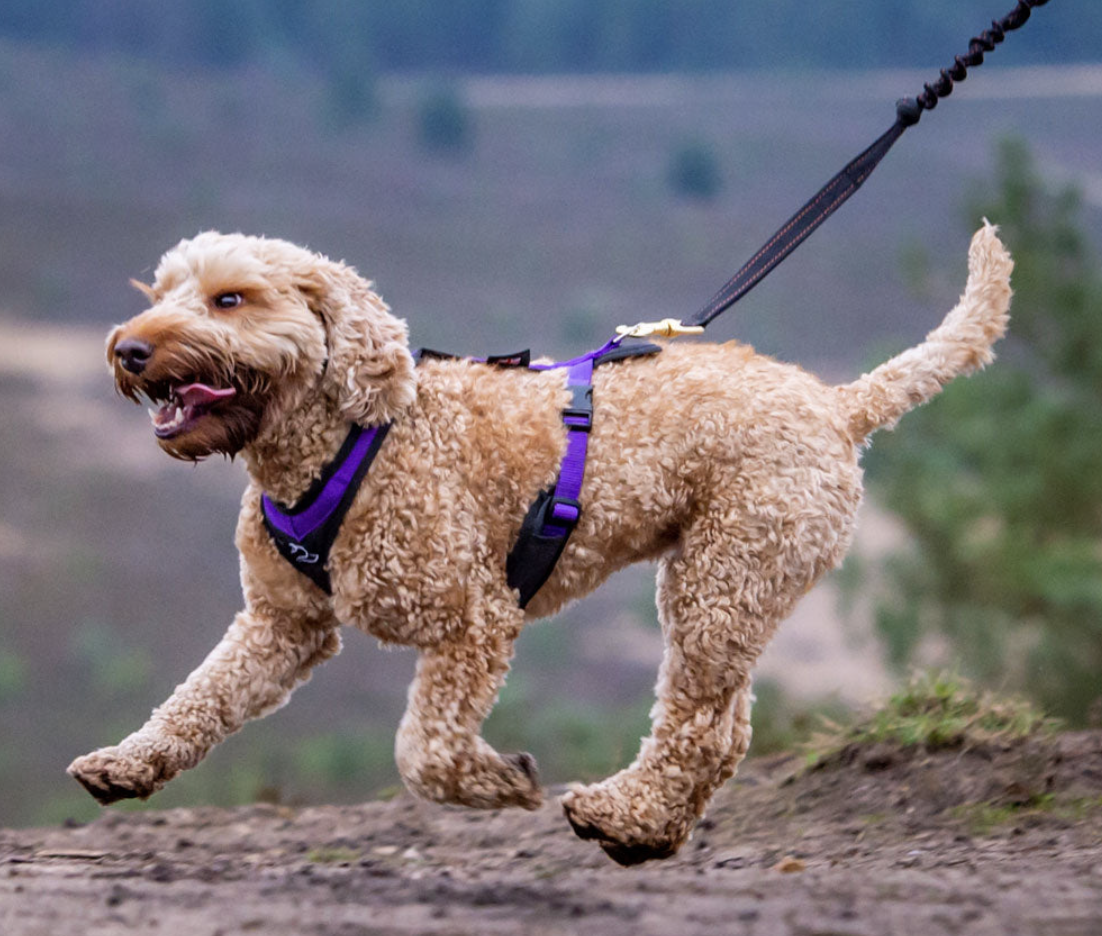Running in the Cani-Ultra Trail marathon
“I felt very emotional as I came into the final few 100 yards. I could see my friends cheering us on. At this point, my little dog rose to the attention and decided we had to have a sprint finish."
Dogs. There are approximately 12 million dogs in the UK, each with unique personalities, many belonging to wonderful homes. And many of us have to admit, there’s something special about running with our dogs.
Michelle Oseman, a gun dog trainer from Cornwall, was looking for something new to do with her six pups. Gun Dogs form the umbrella of dogs that were bred to assist in hunting game and birds.
Dogs in this category include the high-energy breeds like Spaniels, kind Retrievers and inquisitive Pointers. Michelle, who has worked with her dogs her whole life, was looking for a new way to exercise her dogs and herself and thought she’d try running.
Canicross is running with your dogs, more specifically, with them strapped to your hips. Working in tandem, runners and dogs must understand one another to run safely.
“Now, as a dog trainer and somebody who’s worked and competed with my dogs, I’m very much aware of the bond you can get working your dog, the teamwork you get. When you run with your dog, that’s the same experience because the dog has to work with you.”
When Michelle first started, she went to a taster session with their local DogFit trainer, who introduced her to the couch-to-5k program. Within a few months, she and her dogs were running 5km races and then 10km races. Most recently, she participated in the Cani-Trail Ultra in the Brecon Beacons, a canicross ultramarathon created by Johnny Fletch.
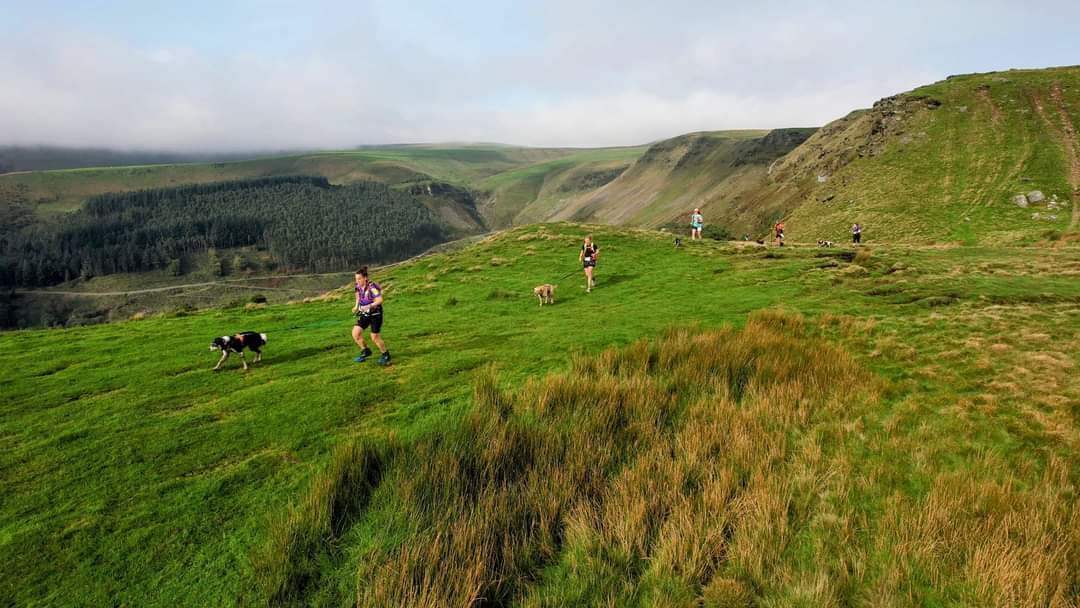
The Cani-Trail Ultra was set up as there were ‘no longer distance K9 running events solely for dogs and their human passengers in the UK.’ Several routes are available, each carefully designed and monitored by volunteers and organisers.
According to their website, the event is all-inclusive, accepting all fitness abilities and dog breeds:
“Our Race Director is ex-military and a former dog handler completing several K9 Biathlons whilst in the services and has participated for the past 13 years in many Ultra Marathons with his dogs in (including his old husky x breed & current Vizslas) both in the UK & France, along with Bikejoring and many Cani-cross events.”
Fletch and his dogs personally test the routes, so you know they are safe for your own furry pals.
“I used to run my two springers, and they weigh 50 kilos between them. And if they decide they will go down a hill faster than you, you’re in trouble. If they decide that one’s going to go left and one’s going to go right, you’re in trouble. Especially when you’re running because we all know that you’re slightly off balance; anything can happen. So it really is about teamwork.”
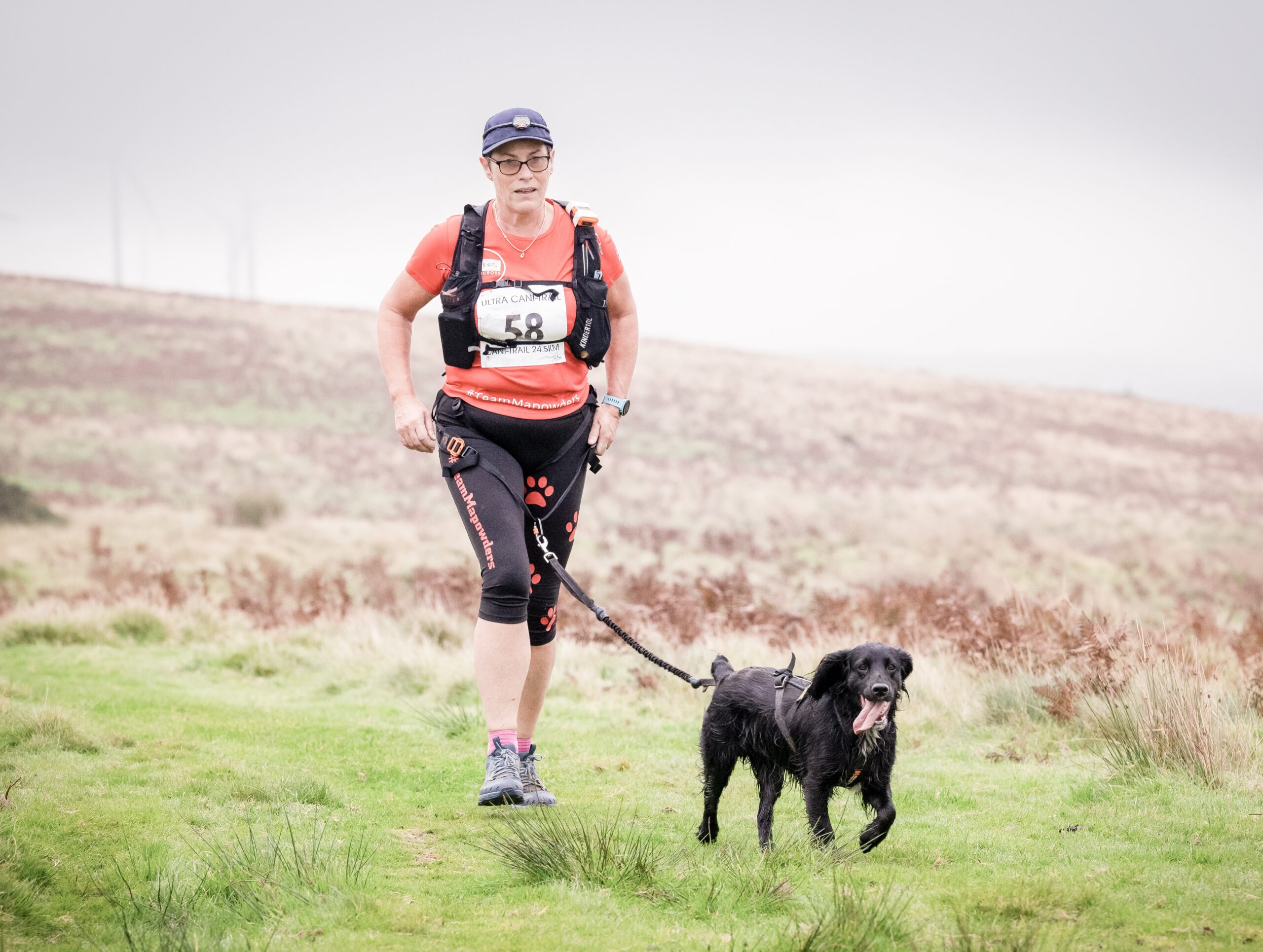
Michelle explains that not only is the exercise good for you and your dog physically, but as running helps our mental health, it also helps your dogs.
“It’s a great way to keep every dog fit. Whatever dog you’ve got, you’ve got a little dog, big dog, whatever. It has no boundaries. It doesn’t matter what dog you are; you can run. It doesn’t matter what runner you are; you can run.”
Michelle did admit that she tries to run on her own at least once a week but says the experience is entirely different to running with a dog.
“Running on your own is harder in a lot of ways.” She said. “I’m currently running with my young cocker. He’s solid, and he definitely pulls, but he’s not pulling me off my feet. But you’ve got that force helping you forward; It’s very different. It is really different, and I think how you run changes.”
“You are running slightly different because you’re in a harness, and when it’s taken away, you suddenly feel very naked.”
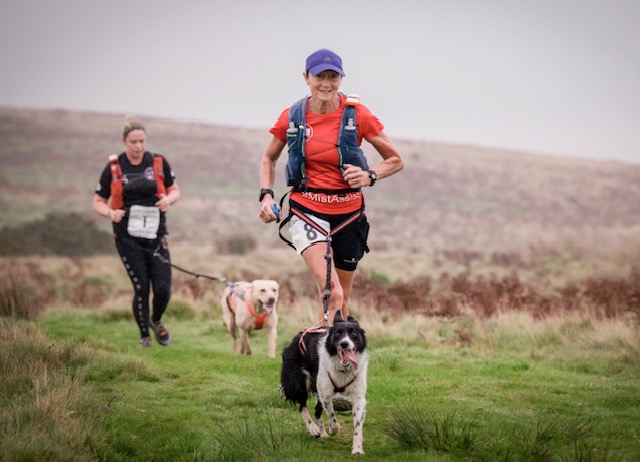
Michelle had completed the half-marathon distance and was eager to take the next step: “A friend suggested this event as it was a canicross only event and was a marathon plus. In the glow of completing my first half I entered then had six months to prepare.”
When training for an ultra, we train our bodies to take on the extra mileage and buy the right kit to keep our bodies healthy. Michelle explains that while DogFit provides excellent advice, you and your dog are a team, and if it comes to race day and your dog is injured or poorly, you can’t race.
Michelle states that even if you’re an excellent ultrarunner, you must build your dog up to prevent sickness and injury. Dogs will pick it up far faster than us: “Any of the sporting breeds, the gun dog breeds, the sporting breeds, they’re built for doing this; I can assure you they’ve got a lot more in the tank than you realise.”
“They are capable of it. You must take it differently if you’ve got an old or injured dog. I’ve got six spaniels, and two of them are very old. Three have run with me in the last two or three years. Two of them have retired because they’ve got too old for it. But my younger dogs are designed to be in the shooting field all day, working on grouse moors in harsh conditions. This is nothing for them physically.”
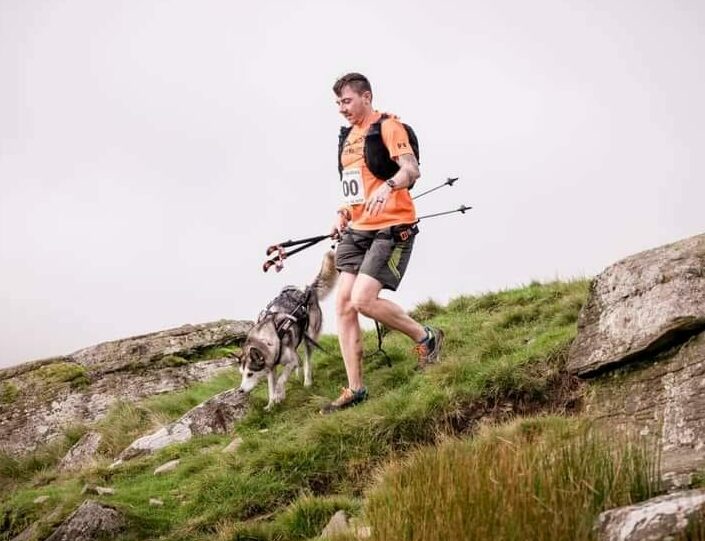
Nevertheless, before their race, Michelle took her dog to the Vet for a full ‘MOT’ to ensure they were both fully prepared come race day. While accepting that things could happen en route, she felt fully prepped going into her race.
“The route was typical Welsh moorland and steep inclines with muddy areas and stoney tracks.
Because of the recent dry spell, the tracks were much drier than we expected but still very challenging to run on. The hills seemed to go on for miles, and they really did!”
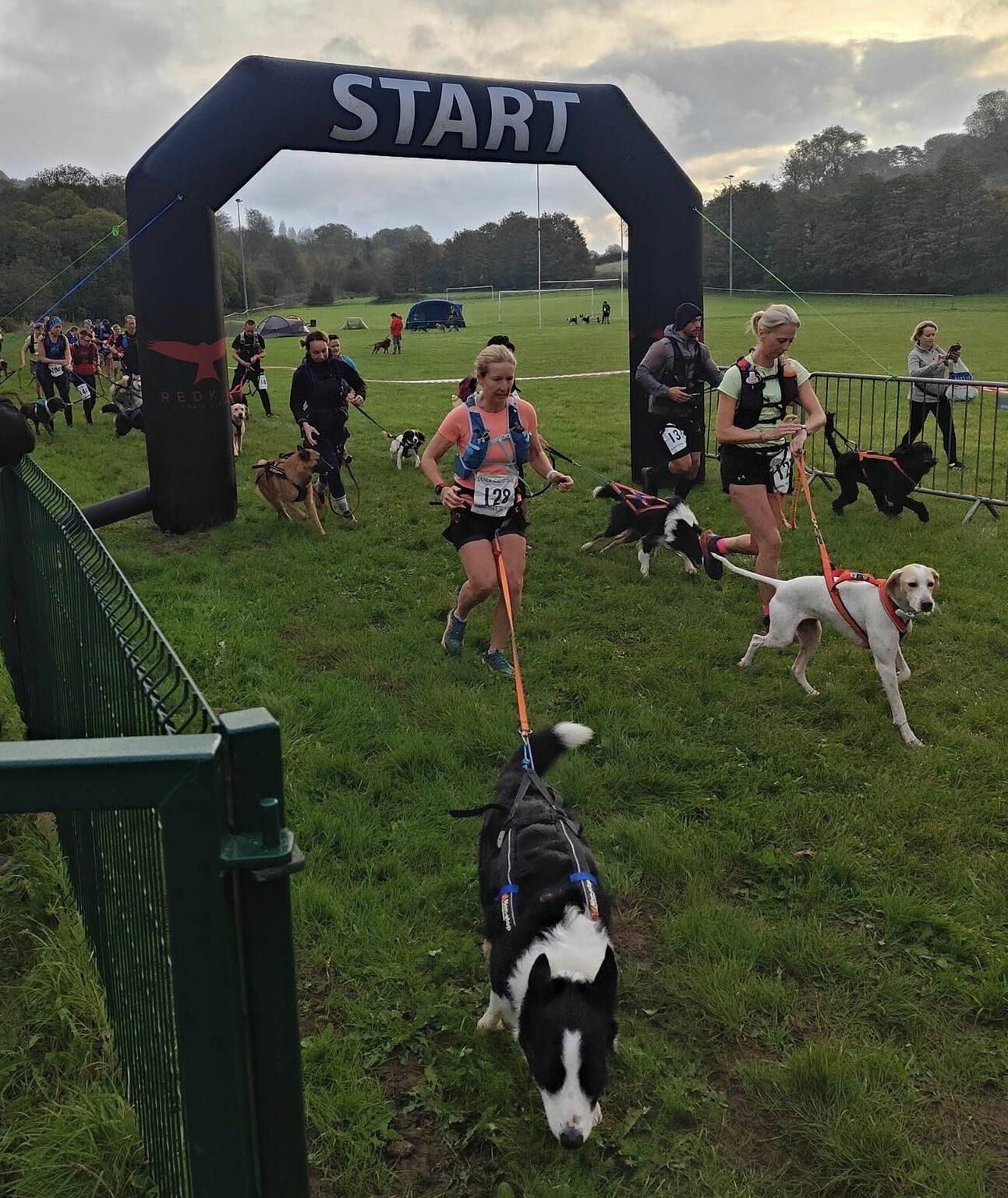
The second Ultra Trail Cani-Trail took place on the 7th of October and covered 29.4 miles through the Southern Welsh hills. Full Cani-Trail Results – https://results.opentracking.co.uk/event/cani2023
Future editions of the race will alternate route directions, with the next one to take place in March 2024.
Three checkpoints were en route, stocked with two-legged and four-legged supplies, manned by encouraging and very friendly volunteers: “The organisers mantra was ‘Dog first then you” at every checkpoint. They were very dog-focused.”
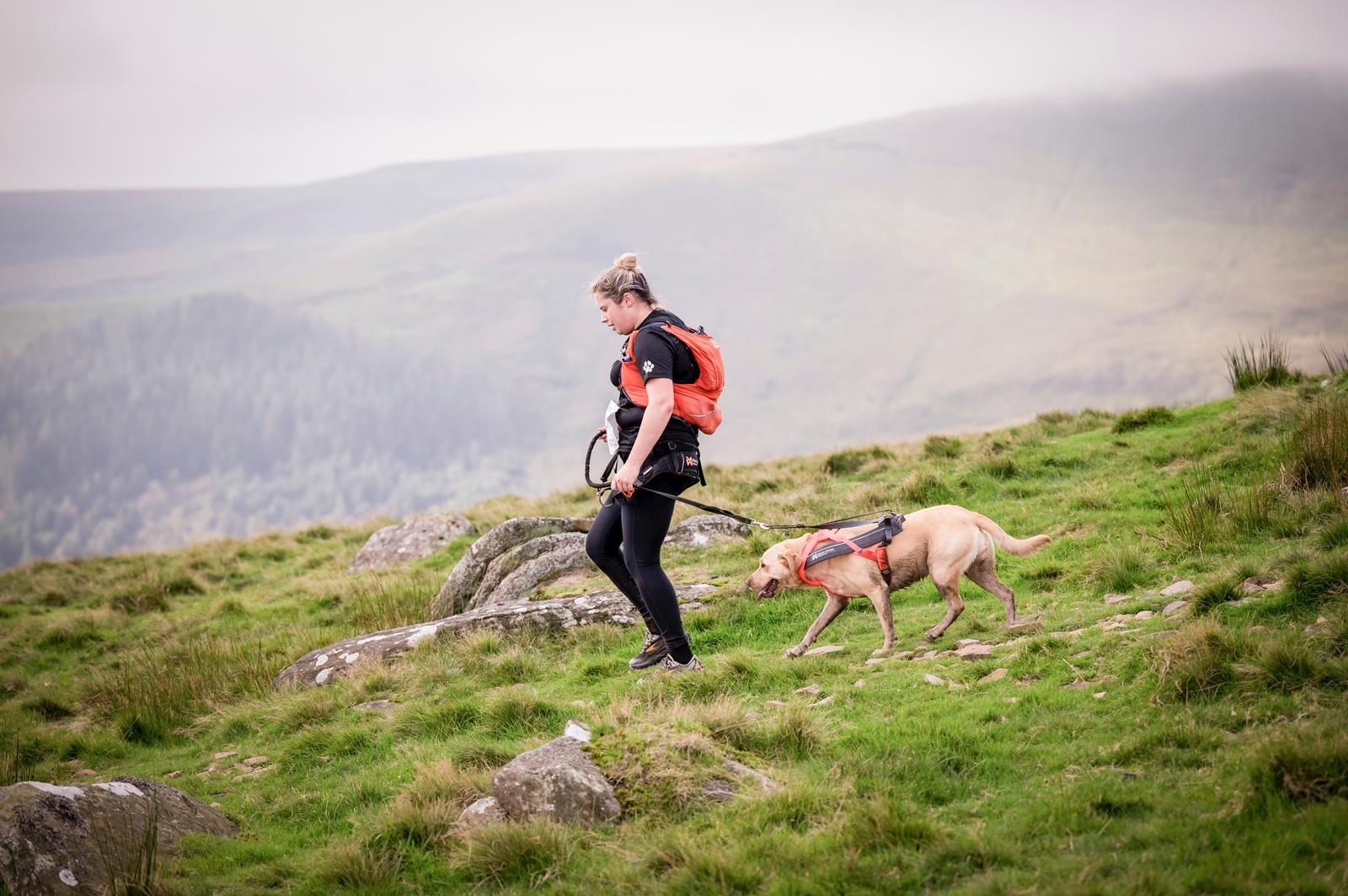
Michelle, who ran with her cocker-spaniel, says her pooch really enjoyed the race, spending hours exploring different terrains and spending quality time with her.
“The next day, I think he would have happily gone out and done the whole thing again.”
Crossing the finish line in 10:30:56, Michelle described the affair as truly emotional: “I felt very emotional as I came into the final few 100 yards. I could see my friends cheering us on. At this point, my little dog rose to the attention and decided we had to have a sprint finish. He pulled like crazy and galloped us both across the finish line. I can own up to a few tears of joy.”
She hopes that canicrossing events become more popular and invite more people into the running community. While she recognises that these races have to acknowledge the assistance the dog gives you, she suggests putting them in a whole different category.
“I think that a lot of people that run might get into running with their dog, but also people like me, who are very dog-centric, have been brought into running and love running now because of my dog. When you’ve got safe events, you promote the right thing to both groups of people from day one.
“I’m really keen that we see more events. The ultra I did was the Cani-Trail that Johnny Fletch has set up in Wales, and that was 100% canicross; it was brilliant. To see 300 people running with their dogs was just awesome.”
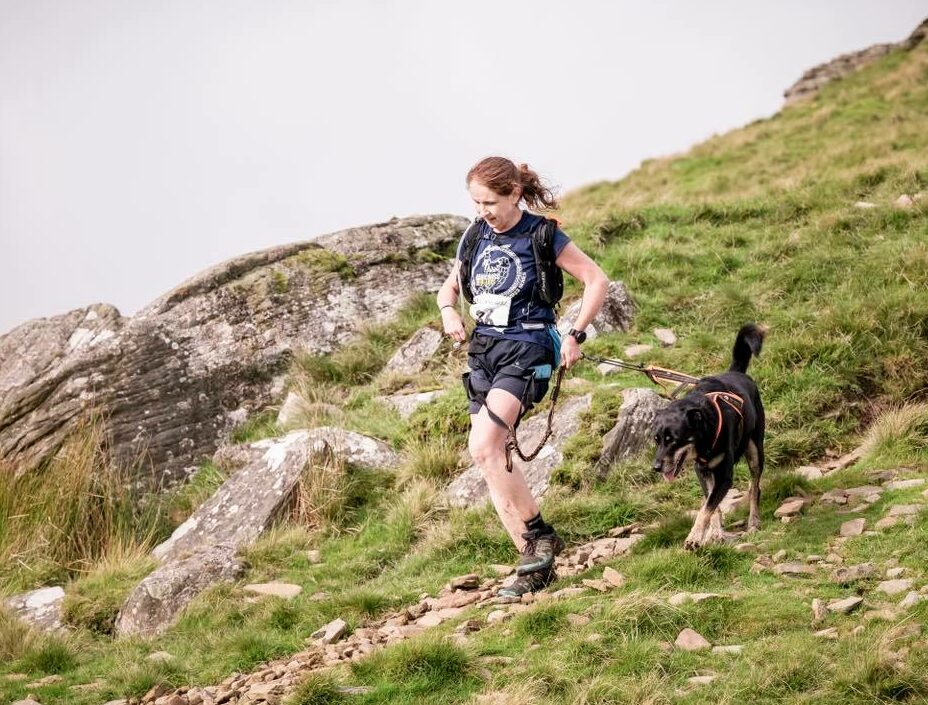
Michelle’s top tips:
Canicross racing season starts in September and continues until March, as the colder weather is better for the dogs. Michelle offered many tips for those considering training their dog through the colder months.
-
I don’t put coats on my dogs while they run, as they tend to self-regulate. If you’ve got a very thin-skinned dog, some of the Pointers and Vislas. They tend to be a bit wary of rain; some of those dogs tend to wear a raincoat. After the run, I will coat my dog to help them warm up.
-
When you finish running, check your dog over. As soon as I finish a race or a run, I check all the dog’s legs and paws and make sure they’ve not picked up any debris that will hurt them, any cuts or bumps, because dogs are very stoic. Most dogs could literally run with an open wound, and because the adrenaline is pumping, they don’t stop.
-
You must ensure snow isn’t balling up in the dog’s feet; otherwise, it can feel like running with a stone in your shoe. Some hairier dogs will suddenly get all these snowballs up their leg and become rock solid. It’s something that I’ve experienced working dogs in snowy conditions before that can change the way they run.
-
I light up my dog when running in the dark so other people can see me and see that I have a dog attached to me.
Written with Emily Yarwood
Why not enter our competition below…
